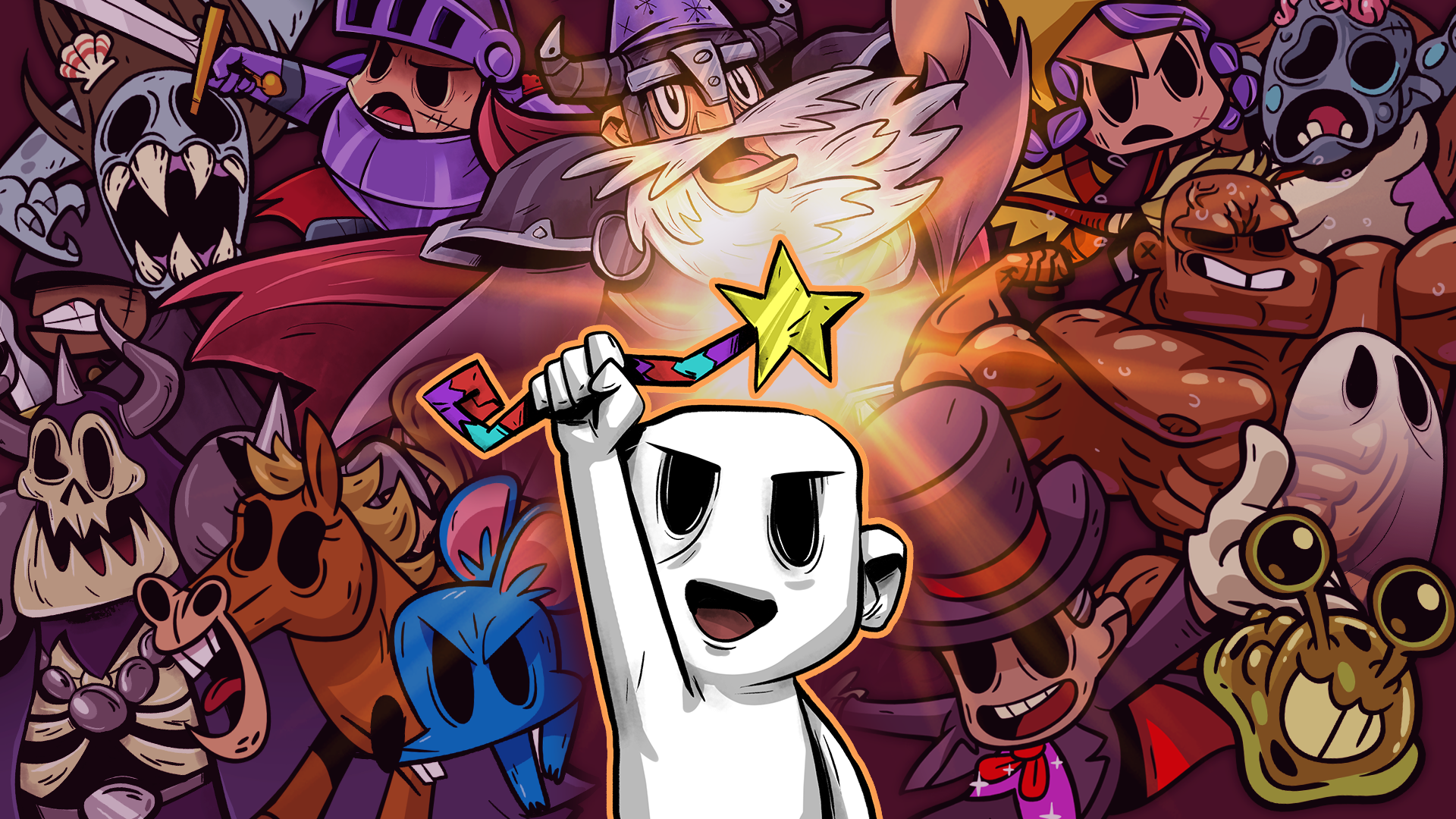DrinkBox Studios always delivers a twist on a well-worn genre to rework the formula. In Tales From Space: Mutant Blobs Attack, it was a terrific puzzle-platformer with a B-movie backdrop. And in the Guacamelee! duology, it was a Metroidvania soaked in Mexican history with luchador action. Now with Nobody Saves the World, it’s an action RPG where instead of rolling multiple characters, you play as a single character that’s comprised of multiple classes that you can switch to on-the-fly. DrinkBox Studios demonstrates how sure-footed they are in what they’ve made, because there’s such an enchanting world with delightful role-playing elements and varied gameplay you’ve gotta play.

A calamity has befallen the lands, though this isn’t just any calamity, it is “The Calamity” and it has returned. Nostramagus has gone missing. The world is in shambles, and then there’s you, a nobody named Nobody to save the world. Waking up in a one-by-one cell, and you’ll need to fight your way out to find out more about what’s going on. After doing so, you run into Randy the Rad, who is clearly a jerk and behind all of the things going wrong. His ineptitude causes him to lose his magic wand to Nobody, and now you’re off to stop the calamity once and for all. While it’s never this overt, this is the moment where Nobody can be somebody, but anybody can be a somebody – even if you’re a nobody.
It’s in this first dungeon where you’re introduced to forms. These allow you to use magic to transform into specific types of animals, humans, half-humans, and non-humans. The first one you get is a rat, which has a bit ability. Each form has a grade from F to A, which is an individual level in comparison to the overall level of Nobody. Grinding almost becomes a required element of the game, and something I’m not that fond of. The core gameplay loop is engaging enough, but it sometimes takes too long to get the requisite level to get to the thing you want to be doing.
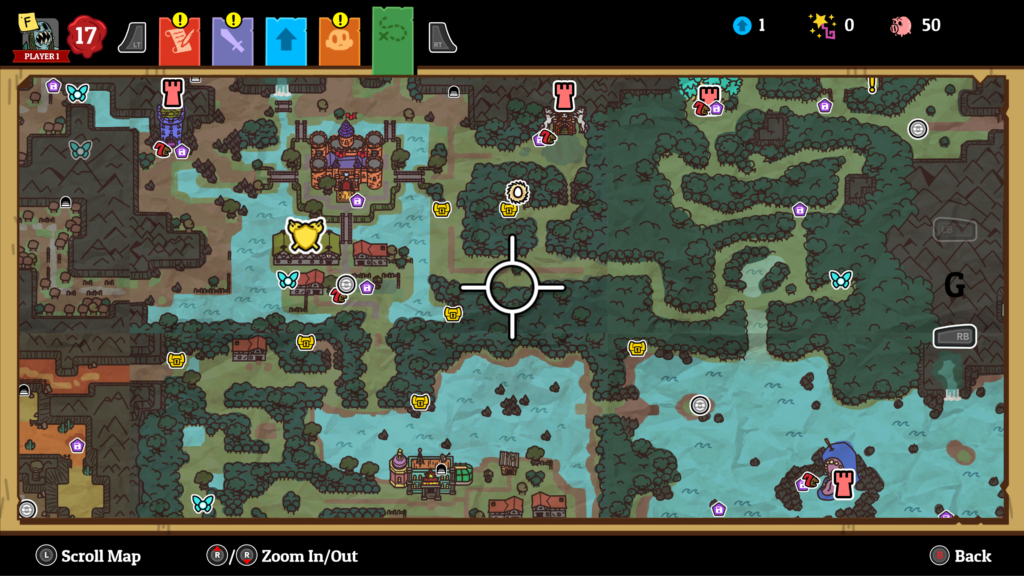
Nobody Saves the World is an action RPG; meaning you’ll be traversing a large area, fighting mobs of enemies, uncovering treasures, and discovering towns of traders and quest givers. Exploring the world is not only encouraged, but necessary as there’s a fog of war that gets revealed as you make your way around. Everything you do has a quest attached to it, and you’re rewarded for nearly every action you take.
There’s tasks that are standard fare like just killing baddies or using your powers. But the game is at its best when one quest had me change into four forms, because a magician wanted me to take advantage of a sale. The interesting element is that the store only allows humans. So when I tried using a mermaid, I got yelled at because I was only half-human, but I only had three human forms I could use. It’s so silly, but it’s DrinkBox Studios’ bread and butter – the humor, they just absolutely nail it. I was close to unlocking the Magician form, which required reaching specific grades for two forms to unlock it. Once I had another human form in my roster, I was able to complete the quest that was impeding my progress. There’s so many moments like this, there’s some emergent puzzle solving that leads to creative solutions.
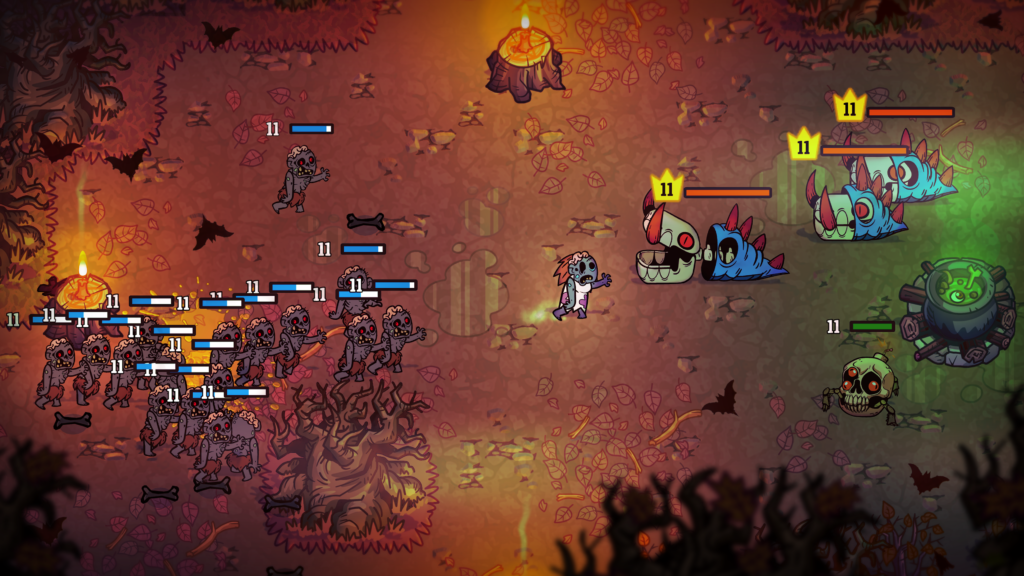
Initially, the game’s combat feels very one-note. While there’s abilities on cooldowns and critical hits, it seems to lack any depth. It’s several hours in when this changes for you, as the game then introduces different types of damage, such as: sharp, blunt, light, and dark. The type of damage you do, and weapons you’ll use all depend on the form you take on, as each type specializes in something. The game opens up even further when you get leveled up with a form to slot in an ability from a different form. This mixing and matching is brilliant. If you have a form that does light damage and blunt damage, it allows you to swap in abilities that cover the gap with sharp or dark damage. You can do this for active abilities, but the passive ones as well, and this is a huge part of the game. Like building up resistances or dealing dark damage over time, and so on. It’s a great system that when doled out over time would be otherwise overwhelming. Being able to build a form for specific situations is exactly what you should be doing, and it pays off so well.
There’s a shopkeeper at various areas of the world, and this is where you get to use your hard-earned coin and cash. The shop holds upgrade tokens to enhance the abilities of individual forms, buying infinite quests, or even increased damage. If you take the time to collect money, you’ll have more than enough to buff your stats and make things easier on you in the end.
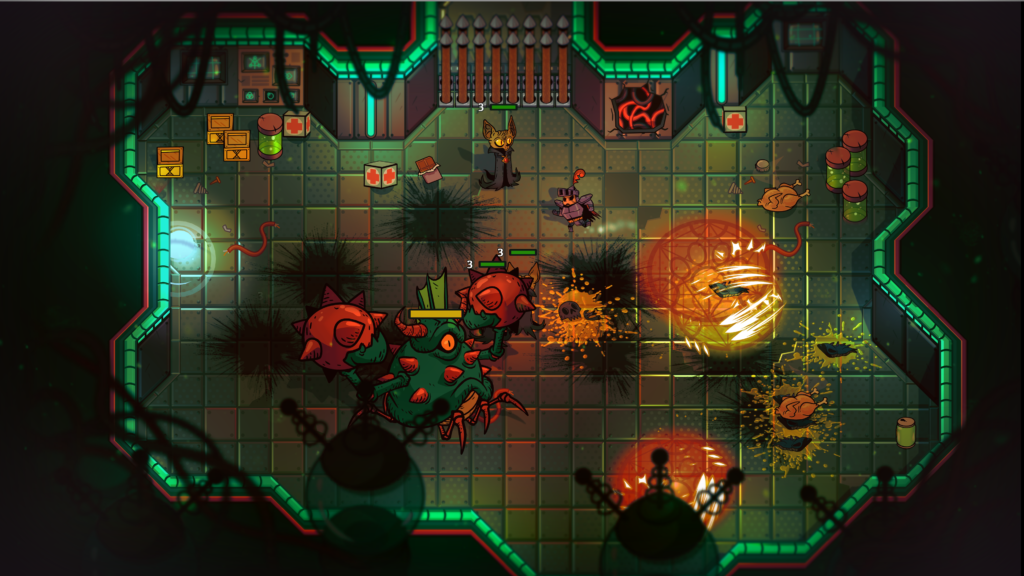
The overall arc of being able to stop the Calamity and find Nostramagus, is collecting five shards. The shards are spread out across the land, only retrievable from Castle Dungeons. These castle dungeons require stars, which are collected from completed quests, or bought from the vendor. Completing quests, whether for a form or a specific task takes a healthy amount of grinding, which I’m not the biggest fan of. Along the way you’ll have to contend with demi-dungeons. It’s here that dungeons have parameters, like getting a required number of kills to move on, or having to endure poison to do so. At the entrance of these dungeons, there will be save points that you can respawn at. Because dungeons of any type can be tough if they’re around your level, and if you die, you’ll be sent back to the beginning. All the dungeons are procedurally generated, so even if you don’t finish it, will be completely different each time you enter them. If you wish to re-enter already completed dungeons for an added layer of challenge, you an do so. Though you won’t get any rewards like stars for unlocking the castle dungeons for it.
While there’s elements that are procedurally generated, a majority of Nobody Saves the World has hand-crafted locations and design. This is an incredibly gorgeous game, with bloom and bright colors popping off the screen. Every part of the game has wonderfully detailed visuals that you want to stay and look at it. When this is coupled with the music from Superbrothers: Sword & Sworcery and Below composer, Jim Guthrie, it takes it to a new level.
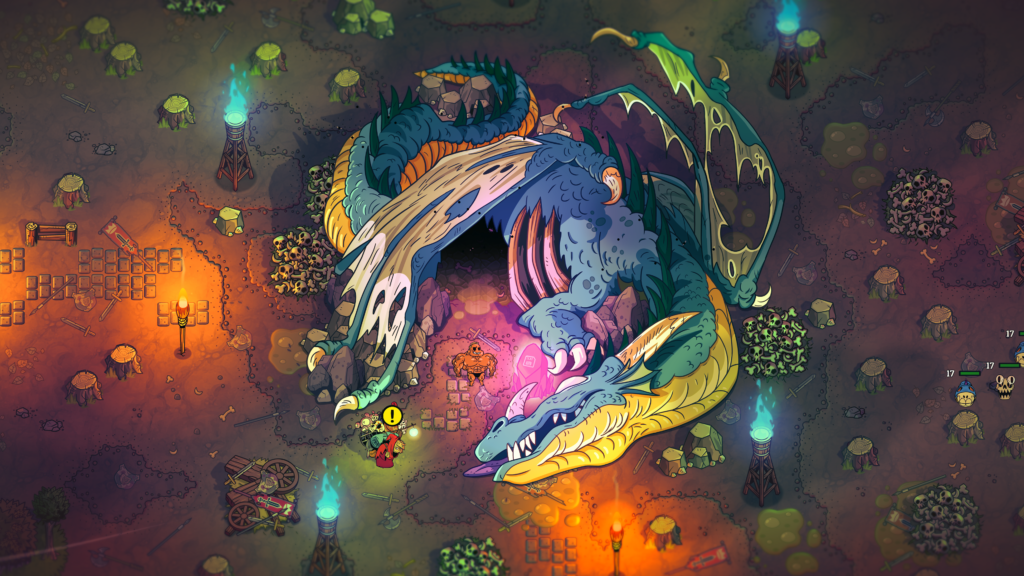
Nobody Saves the World is reminiscent of other games in the genre, yet not at all like them. It quickly becomes clear that Nobody Saves the World is out to do its own thing its own way, and that’s refreshing what you’d expect from DrinkBox. Over the course of the 20-hour journey, I was ready to see it end, thanks in no part to its grindy element. I do wish it was a bit more focused, but exploring the map, opening up pathways, and finding its secrets are something I enjoyed. This is incredibly inspired, ambitious, and full of that humor that DrinkBox Studios is known for, making Nobody Saves the World an instant classic.
A Steam code was provided in advance by the publisher for review purposes
